DMX512 Basics for Moving Head DJ Lights
- DMX512 Basics for Moving Head DJ Lights
- What is DMX512 and why it matters for moving head dj lights
- Basic DMX concepts every DJ and operator should know
- How moving head dj lights typically map DMX channels
- Channel mode comparison (typical examples)
- Addressing and patching moving head dj lights quickly and reliably
- Physical wiring: connectors, cable types, topology
- Power and inrush considerations for moving head dj lights
- Patching strategies for DJ setups and small venues
- Troubleshooting common DMX issues with moving head dj lights
- Advanced features: RDM, pixel mapping, and Art-Net/sACN gateways
- Practical setup checklist for a gig
- Why fixture selection matters for DJs
- Integrating LQE expertise with DMX512 for moving head dj lights
- LQE advantages for DJs and lighting professionals
- LQE product highlights and core competencies
- Real-world case: setting up a basic DJ rig with moving head dj lights
- FAQs
- Contact LQE or view products
- Sources
DMX512 Basics for Moving Head DJ Lights
What is DMX512 and why it matters for moving head dj lights
DMX512 (short for Digital Multiplex) is the industry-standard protocol for controlling intelligent lighting fixtures, including moving head dj lights. It transmits control information as a sequence of up to 512 channels (one universe) over a balanced, digital link. Each channel carries 8-bit values (0–255) that represent parameters such as pan, tilt, color, gobo, intensity, and special effects. For DJs and club technicians, understanding DMX512 is essential because it determines how many fixtures you can control from a single controller, how precise motor movements and effects will be, and how to troubleshoot common connectivity issues on the fly.
Basic DMX concepts every DJ and operator should know
Key terms and concepts to memorize:
- Universe: One DMX universe = 512 channels. Many venues require multiple universes for larger rigs.
- Addressing: Each fixture is assigned a start DMX address; it occupies consecutive channels based on its mode.
- Channel mode: Moving head dj lights often have selectable modes (e.g., 8, 12, 16, 20, 24, 32 channels). More channels = more granular control but higher channel usage per fixture.
- Patch: In your console or software, you patch fixtures by assigning their DMX start address and choosing the correct fixture profile/mode.
- Termination: A 120-ohm termination resistor should be fitted at the end of the DMX line to prevent signal reflections over long runs.
- RDM (Remote Device Management): An extension to DMX that allows two-way communication for remote addressing and status monitoring (highly recommended for complex setups).
How moving head dj lights typically map DMX channels
Moving head DJ lights pack many functions into DMX channels. A simple 8-channel mode might include master dimmer, pan coarse, tilt coarse, pan/tilt fine, color, gobo, speed, and strobe. A 20–32 channel mode breaks these into finer-grain controls (separate coarse/fine for pan/tilt, multiple gobo wheels, prism, frost, focus, zoom, and extensive color mixing). Choosing the right mode is a trade-off between control precision and channel economy.
Channel mode comparison (typical examples)
Below is a simplified comparison table showing common channel counts and what they usually control in moving head dj lights. Real fixtures vary; always consult the fixture manual for exact channel maps.
| Mode (Channels) | Common Controls | When to use |
|---|---|---|
| 8–12 | Pan (coarse), Tilt (coarse), Dimmer/Intensity, Strobe, Color wheel, Gobo wheel, Speed | Small venues, limited console channels, simple shows |
| 16–20 | Pan/Tilt coarse + fine, Color wheel, Gobo wheel(s), Prism, Shutter, Dimmer, Focus/Zoom | Medium rigs needing more precise positioning and effect control |
| 24–32+ | Pan/Tilt coarse + fine, Full color mix (RGB/RGBW or CMY), Multiple gobos, Animations, Pixel mapping, Motorized zoom/focus | Concerts, theatre, high-end clubs where detailed control and pixel effects are required |
Source: typical fixture manuals and industry practice (see sources list).
Addressing and patching moving head dj lights quickly and reliably
Best practices for addressing and patching:
- Plan a channel map before you start cabling. Sketch the rig with start addresses and modes for each fixture.
- Use consecutive addresses and avoid gaps unless needed. For example, if a fixture uses 20 channels and starts at 1, the next should start at 21.
- Label fixtures with their start address (gaffer tape or printed labels). This saves setup time during gigs.
- When working with a console or lighting software, ensure the fixture profile/mode matches the fixture’s selected mode. Mismatches cause erratic behavior.
- Use RDM-capable networks when possible—RDM speeds up addressing and diagnostic checks without climbing trusses.
Physical wiring: connectors, cable types, topology
DMX512 is designed for a daisy-chain topology. Follow these wiring rules:
- Use DMX-rated cable (pair of twisted conductors with shield). Recommended: 110-ohm DMX cable. Avoid microphone cable—it's unbalanced and can introduce noise.
- Connector: 5-pin XLR is the official standard. Many DJ fixtures use 3-pin XLR for convenience; these may work but aren’t standard-compliant. If you mix 3-pin and 5-pin, be careful with pin mapping.
- Max cable run without repeaters: roughly 300 meters (1,000 feet). If you need longer runs or many fixtures, use DMX splitters/distributors.
- Terminate the last fixture with a 120-ohm resistor between pins 2 and 3 (or use a unit with onboard termination). Without termination, long runs can suffer signal reflections and flicker.
- Do not use star topologies (splitting the run into several branches) without an active splitter—signals degrade and timing issues appear.
Power and inrush considerations for moving head dj lights
Many moving head fixtures, especially those with discharge lamps or large LEDs, can draw significant inrush current at turn-on. Tips:
- Power up fixtures in small groups rather than all at once to avoid tripping breakers.
- For touring rigs, use power distribution with individual circuit breakers or remote power sequencers.
- LED moving heads are typically lower in power than discharge lamp heads but still may have inrush spikes. Check the fixture’s power and inrush rating in the manual.
Patching strategies for DJ setups and small venues
For DJs and small clubs where the lighting console might be basic or an off-the-shelf DMX controller is used, the following strategies are practical:
- Use lower channel modes (8–12 channels) when the controller has limited faders or channels.
- Create macros or chase sequences on the controller for common DJ cues (build, breakdown, strobe sections). Save these as scenes for quick recall.
- Consider a small lighting processor or DMX playback device for unattended shows—upload scenes and let it run the show while you DJ.
- Label channels and maintain a simple channel map near the console for quick reference during performance.
Troubleshooting common DMX issues with moving head dj lights
Common problems and quick fixes:
- No response: Check addressing, power, and whether the controller’s output is enabled. Verify cable continuity with a DMX tester.
- Flicker or jitter: Ensure proper termination and check for cable damage. Replace suspect cables and test again.
- Random behavior (offsets, motors jumping): Mismatched fixture mode/profile between console and fixture is often the culprit—confirm mode settings on the fixture and patch correctly.
- One fixture not responding: Try a loopback test: take the DMX cable from the controller to the non-responsive fixture and then to the next one. If the next fixture works when cabled directly, the issue is local to the fixture (power, internal fuse, or DMX in port).
Advanced features: RDM, pixel mapping, and Art-Net/sACN gateways
As rigs scale up, these technologies become valuable:
- RDM: Allows remote addressing and status monitoring. Great for addressing fixtures without physical access (trusses).
- Pixel mapping: Some moving head dj lights with multi-segment LEDs or pixel rings can be controlled as individual pixels using protocols like Art-Net or sACN bridged into DMX. This enables dynamic wash and graphic effects.
- Art-Net and sACN: Network-based lighting protocols that carry multiple universes over Ethernet. Use when you need more than a few DMX universes or want to integrate software lighting consoles and media servers.
Practical setup checklist for a gig
Use this pre-show checklist to minimize issues:
- Confirm fixture firmware versions and modes (match with console profiles).
- Label all fixtures and cables with start addresses and IDs.
- Check cable continuity and terminate the line.
- Power up fixtures in stages and monitor breaker loads.
- Do a smoke-test: move pan/tilt full range to ensure no mechanical limits or collisions.
- Run through saved scenes and check transitions (no stutter or frame drops).
- Keep a spare DMX cable, spare fuse, and a small toolkit accessible during the show.
Why fixture selection matters for DJs
When choosing moving head dj lights for clubs and DJ-driven shows, prioritize:
- Fast and accurate pan/tilt — crucial for tight, beat-synced moves.
- High CRI and good color mixing — for pleasing skin tones and vibrant looks.
- Silent operation — fans and motors should not interfere with music.
- Compact footprint and robust hanging hardware — clubs often have space and rigging constraints.
Integrating LQE expertise with DMX512 for moving head dj lights
LQE was founded in 2008 and is headquartered in Foshan, China. We are a professional OEM/ODM stage lighting equipment manufacturer specializing in the R&D, production, and sales of middle- and high-end digital stage lighting. Our production base covers an area of about 10,000 square meters, has the ability to produce 100,000 lighting fixtures annually, and has 80 national patents.Our range of stage lighting equipment is diverse, including various moving head lights and static lights, suitable for applications in theaters, music concert stages, studios, broadcasting, religious spaces, exhibitions, nightclubs, leisure venues, theme parks, and more.We are committed to providing first-class modern stage lighting equipment and exceptional customer service, all while maintaining the best value and cost-effectiveness in the industry. Our goal is to deliver high-quality, long-lasting lighting solutions that help stage designers and producers realize their vision.Our vision is to become the world's leading manufacturer of LED stage lighting.
LQE advantages for DJs and lighting professionals
When you combine the technical guidance above with LQE’s manufacturing capabilities, you get tangible benefits:
- Consistent and well-documented DMX channel maps across product lines, which simplifies patching and reduces human error.
- High-volume, quality-controlled production (100,000 fixtures/year capacity) ensures spare parts and replacements are available for touring or large club chains.
- R&D strength and 80 national patents mean innovative features (e.g., efficient LED engines, silent motors, and precise optical systems) are built into moving head dj lights.
- OEM/ODM flexibility allows customized DMX modes or firmware tuning for specific controller ecosystems or unique show requirements.
LQE product highlights and core competencies
LQE’s product portfolio covers a broad spectrum tailored for different venues and technical needs. Core product categories include:
- Waterproof stage lighting — durable fixtures for outdoor events and theme parks with reliable DMX integration and weatherproof connectors.
- Beam moving head light — tight beams with rapid pan/tilt for dramatic aerial effects.
- Moving head hybrid light — fixtures that combine beam, spot, and wash capabilities with multi-mode DMX addressing.
- Moving head wash light — wide coverage, high CRI for even stage illumination and flattering colors under DMX control.
- Moving head profile light — precise edge control and framing shutters for theatrical applications.
- LED effect light — pixel-capable fixtures and RGB/W animations suitable for pixel mapping over DMX or Art-Net.
- LED studio light — color-accurate, flicker-free fixtures optimized for broadcast and streaming setups.
- LED par light — compact, efficient house and uplight solutions with simple DMX channels for clubs and events.
- Lighting accessories — clamps, safety cables, power distribution, and DMX splitters; all engineered to integrate smoothly with LQE fixtures.
Core competencies: integrated R&D for optics and LED engines, robust quality control across a 10,000 m² production base, rapid OEM/ODM customization, and strong aftermarket support.
Real-world case: setting up a basic DJ rig with moving head dj lights
Example scenario: a club wants 8 moving head wash lights and 4 beam moving heads controlled from a 512-channel console. Practical steps:
- Decide fixture modes: pick 12-ch mode for wash (saves channels) and 16-ch mode for beam for extra control.
- Calculate channels: 8 washes x 12 = 96 channels; 4 beams x 16 = 64 channels; total = 160 channels — fits comfortably in one universe (512 channels).
- Plan addressing: start with the wash lights at 1–96, then beams at 97–160. Label each fixture and patch them in the console.
- Wire DMX: daisy-chain from console to first fixture to last, terminate, and check continuity.
- Test: run full motion and color checks; save scenes and cues for DJ-friendly presets such as build, drop, and ambient.
FAQs
Q: How many moving head dj lights can I run on one DMX universe?
A: It depends on each fixture’s channel mode. If each fixture uses 16 channels, you can run up to 32 fixtures in one 512-channel universe (512 / 16 = 32). Choose lower channel modes to increase fixture count but with reduced control granularity.
Q: Can I use 3-pin XLR DMX cables?
A: Many fixtures use 3-pin XLR in entertainment markets, but the official DMX512 standard specifies 5-pin XLR. 3-pin often works for short runs, but pinouts can vary and it’s not recommended for long runs or mission-critical installations.
Q: What causes jittery pan/tilt movement?
A: Common causes include poor DMX signal integrity (lack of termination, damaged cable), incorrect grounding, or mismatched channel modes between controller and fixture. Also check for mechanical limits or obstructions.
Q: Should I upgrade to RDM?
A: Yes, RDM greatly simplifies addressing and diagnostics for larger installations. It’s especially useful where fixtures are mounted in hard-to-reach places.
Q: How do I choose between Art-Net and sACN?
A: Both are Ethernet-based protocols for transferring multiple DMX universes. Art-Net is widely supported and simple to set up; sACN is designed for professional networks and can be more robust at scale. Choose based on your console/software compatibility and network management needs.
Contact LQE or view products
For help matching moving head dj lights to your DMX setup, or to view LQE’s full product range (Waterproof stage lighting, beam moving head light, Moving head hybrid light, Moving head wash light, moving head profile light, LED effect light, LED studio light, LED par light, Lighting accessories), contact our sales team. We offer OEM/ODM options, detailed DMX channel maps, and support for RDM and networked lighting solutions. Reach out to your LQE representative or request a product sheet and sample setup guidance for your venue.
Sources
- ESTA / USITT DMX512 official standard documentation and common fixture manuals (industry practice).
- Manufacturers’ fixture manuals and datasheets for moving head lighting channel maps and power ratings.
- LQE internal product specifications and manufacturing capacity statements (company data provided by LQE).
Top led par can stage lights Manufacturers and Suppliers
OEM/ODM dj lights moving head beam Manufacturers and Suppliers
How to Choose the led stage lighting manufacturer and supplier in us?
Everything You Need to Know About moving head beam lights
Distributor
How can I apply to become a distributor?
Simply fill out the contact form on this page or email us directly with your company information, market background, and cooperation intention. Our sales team will get in touch with you within 1–2 business days.
Can LQE help with product training and technical guidance?
Absolutely. We offer remote training sessions, user manuals, installation guides, and continuous technical support to help your team understand and sell our products with confidence.
What are the advantages of becoming an LQE distributor?
Access to high-performance, patented lighting products
Competitive factory pricing and excellent profit margin potential
Strong R&D capabilities with 80+ national patents
Reliable production capacity: 100,000 units annually
Dedicated account manager to support your growth
1000w
Does LQE Offer a Stage Light Design Solution?
LQE experienced team glad to supply a stage lighting configuration design solution or suggestion for projector who don’t have much experience in lighting design, project, theatre and studio.
What Kind of Certificates You Offer?
All kinds of certificates could be offered by LQE digital moving light factory, which depends on customer’s required, different pricing plan for different approval.
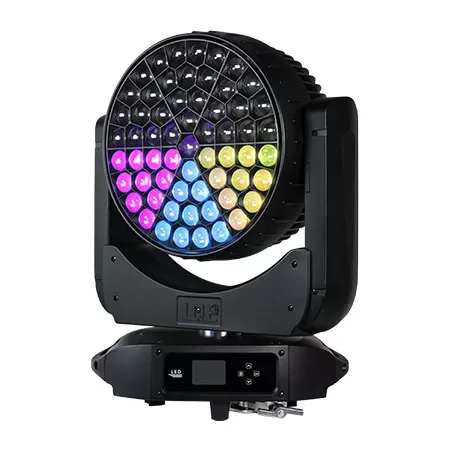
1000w 61x40w RGBW Stage Moving Head Wash Light LW1000
1000W 61x40W LED RGBW Mulichips Moving Head Wash Lights with Zoom (5°–50°), Covering Large Range and Long Distance. Designed to deliver a 5°–50° ultra-large zoom range to achieve a greater wash effect, illuminating stages and events with stunning lighting effects.
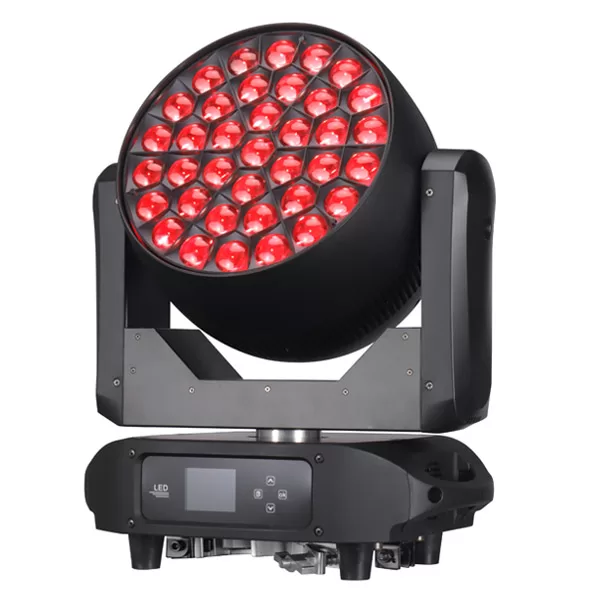
800w 37x40w RGBW Stage Moving Head Wash Light LW800
800W 37x40W LED RGBW Mulichips Moving Head Wash Lights with Zoom (5°-50°), Covering Large Range and Long Distance. Designed to deliver a 5°–50° ultra-large zoom range to achieve a greater wash effect, illuminating stages and events with stunning ring control lighting effects.

LED Moving Head Stage Wash Light LW200Z
The versatile moving head stage light provides a powerful lighting solution for theaters, concerts, and large outdoor performances. Suitable for theaters, TV stations, entertainment stages, and large outdoor performance scenes.

600w 19x40w RGBW Stage Moving Head Wash Light LW600 Zoom IP20
600W 19x40W LED RGBW Mulichips Moving Head Wash Lights with Zoom (5°–50°), Covering Large Range and Long Distance. IP20: Designed to deliver a 5°–50° ultra-large zoom range to achieve a greater wash effect, illuminating stages and events with stunning ring control lighting effects.

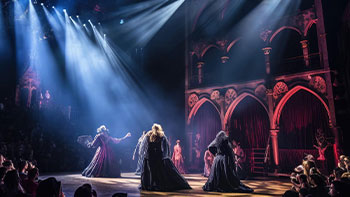
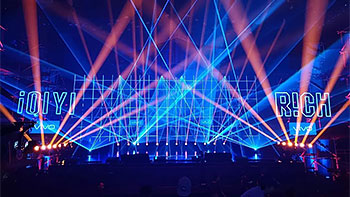

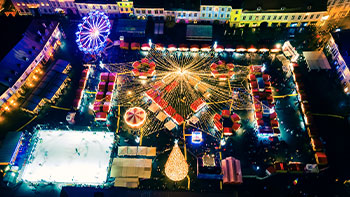








Linkedin
YouTube
Whatsapp: +8618924548390
TikTok